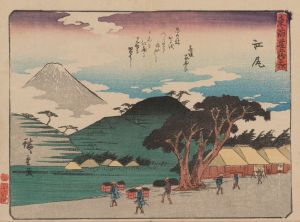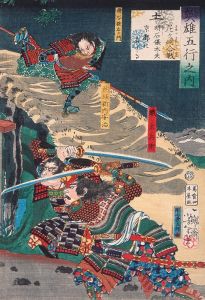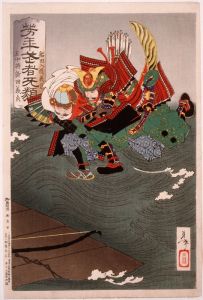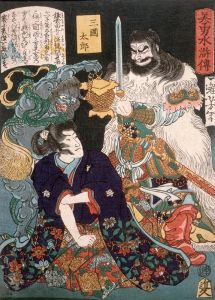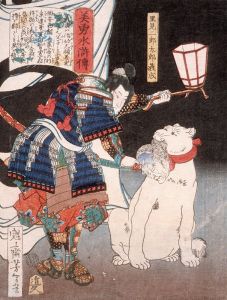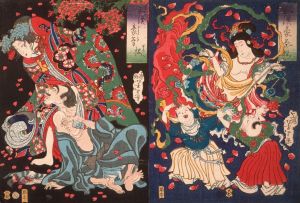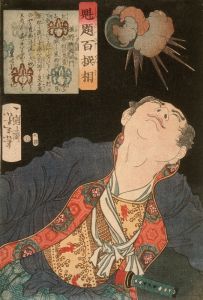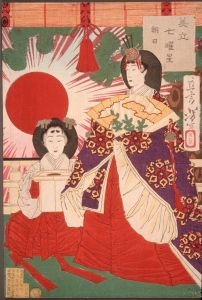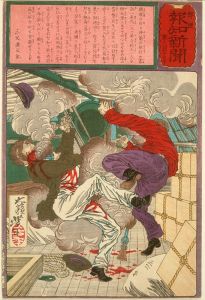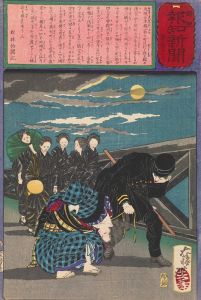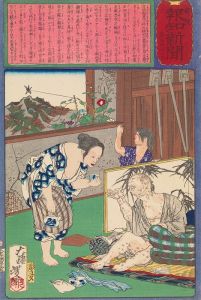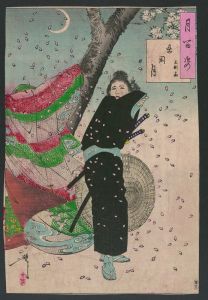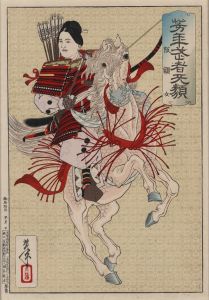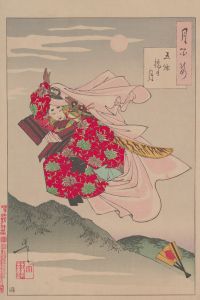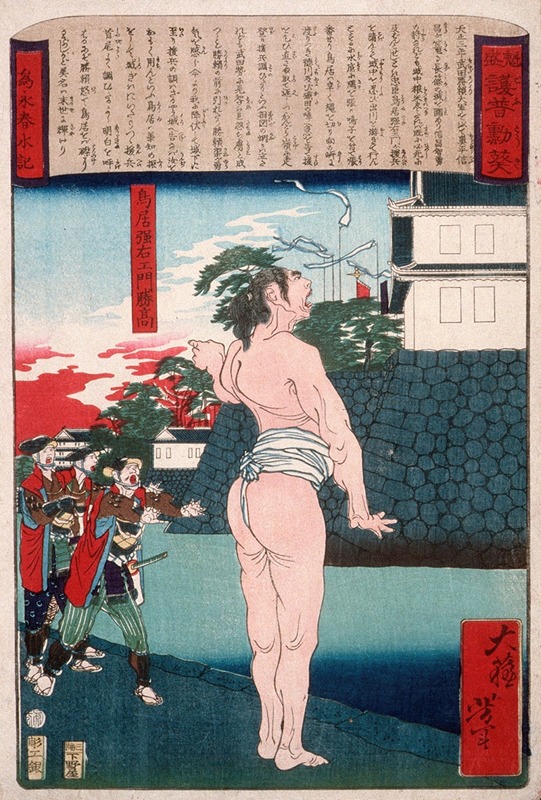
Torii Suneemon Katsutaka Standing by a Moat
A hand-painted replica of Tsukioka Yoshitoshi’s masterpiece Torii Suneemon Katsutaka Standing by a Moat, meticulously crafted by professional artists to capture the true essence of the original. Each piece is created with museum-quality canvas and rare mineral pigments, carefully painted by experienced artists with delicate brushstrokes and rich, layered colors to perfectly recreate the texture of the original artwork. Unlike machine-printed reproductions, this hand-painted version brings the painting to life, infused with the artist’s emotions and skill in every stroke. Whether for personal collection or home decoration, it instantly elevates the artistic atmosphere of any space.
"Torii Suneemon Katsutaka Standing by a Moat" is a woodblock print created by the renowned Japanese artist Tsukioka Yoshitoshi. Yoshitoshi, who lived from 1839 to 1892, is celebrated for his innovative approach to the traditional ukiyo-e art form, which flourished during the Edo period. He is often credited with revitalizing the genre during the Meiji era, a time of significant cultural and political change in Japan.
This particular artwork is part of Yoshitoshi's series "Tsuki hyakushi" (One Hundred Aspects of the Moon), which he produced between 1885 and 1892. The series is notable for its exploration of historical, literary, and mythological themes, all connected by the motif of the moon. Each print in the series captures a moment that is either directly or indirectly associated with the moon, showcasing Yoshitoshi's skill in blending narrative depth with visual elegance.
The print depicts Torii Suneemon Katsutaka, a historical figure from the Sengoku period, a time marked by social upheaval, political intrigue, and near-constant military conflict in Japan. Torii Suneemon is remembered for his bravery during the siege of Nagashino Castle in 1575. As a retainer of the Okudaira clan, he played a crucial role in the defense of the castle against the forces of the Takeda clan.
In the artwork, Torii Suneemon is shown standing by a moat, a scene that captures a pivotal moment in his story. According to historical accounts, Suneemon volunteered to break through enemy lines to seek reinforcements from Tokugawa Ieyasu, an ally of the besieged Okudaira. Despite successfully reaching Ieyasu and delivering the message, Suneemon was captured by the Takeda forces on his return journey. He was offered a chance to save his life by urging the castle's defenders to surrender, but he chose to remain loyal to his lord. As a result, he was executed by crucifixion, becoming a symbol of loyalty and sacrifice.
Yoshitoshi's portrayal of Torii Suneemon is both dramatic and poignant, emphasizing the samurai's stoic determination and the gravity of his mission. The composition of the print, with its careful attention to detail and use of light and shadow, reflects Yoshitoshi's mastery of the woodblock printing technique. The moon, a recurring element in the series, adds a layer of symbolism, often interpreted as a witness to the unfolding human drama.
"Torii Suneemon Katsutaka Standing by a Moat" exemplifies Yoshitoshi's ability to convey complex narratives through his art, making it a significant piece within the "One Hundred Aspects of the Moon" series. It not only highlights the artist's technical prowess but also his deep engagement with the cultural and historical themes of his time.





